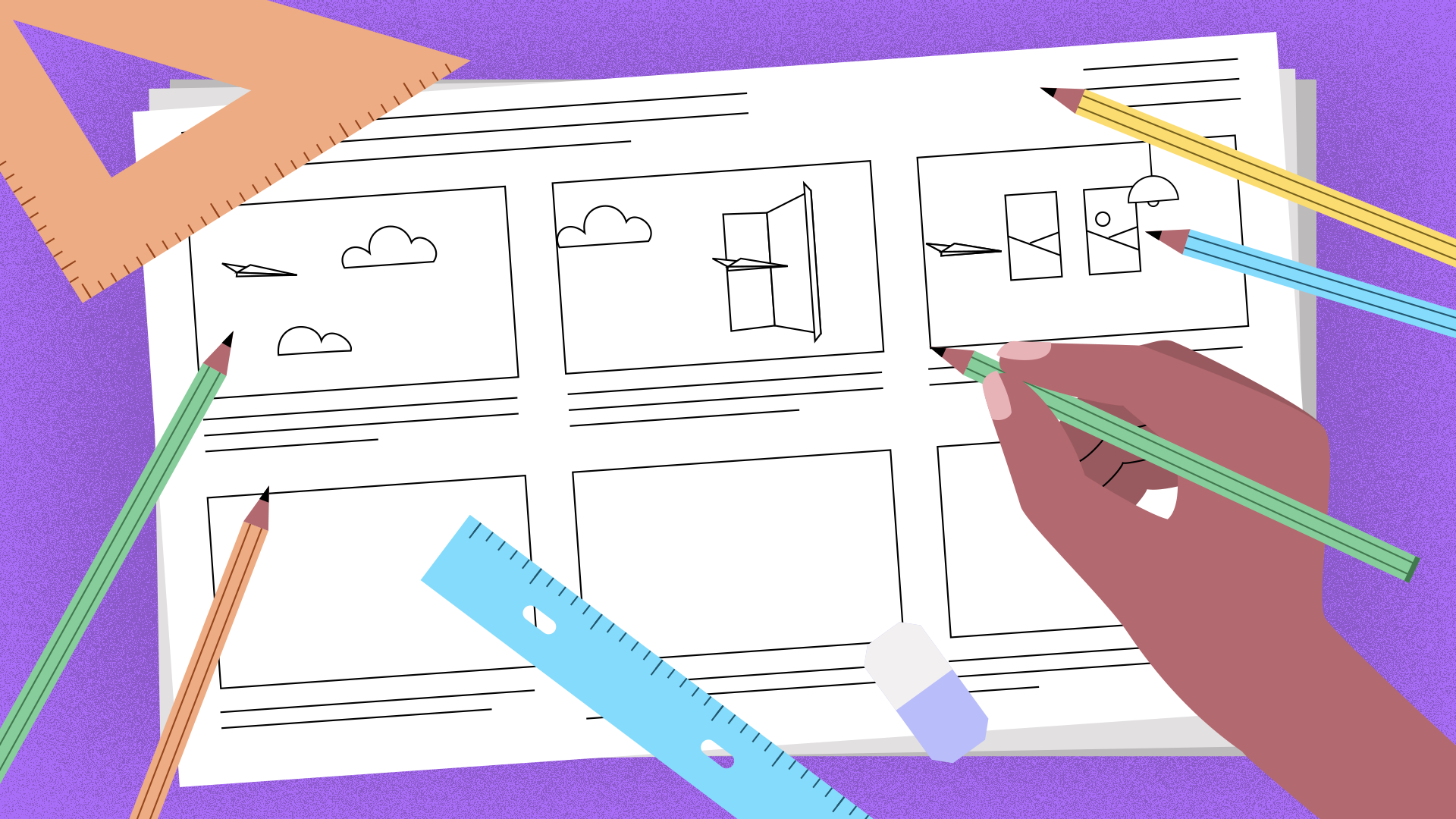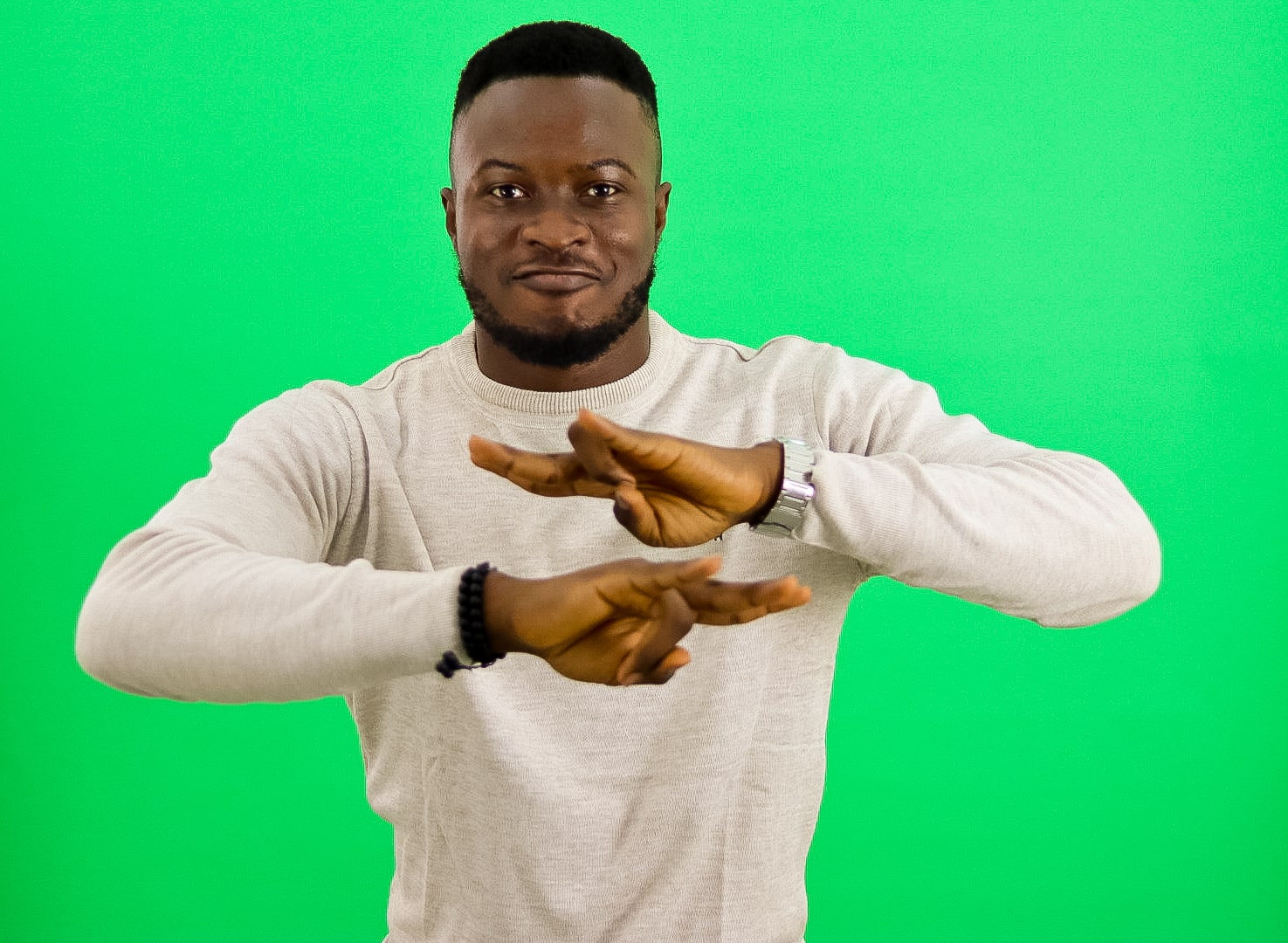You know how you get a little obsessed with things you love? Yeah! I’m guilty of that with Motion Design. I often spend a good amount of time in motion design communities and portfolio platforms swooning over amazing designs and analyzing the creative processes behind them for inspiration. From these explorations, one can easily reaffirm that the final renders that leave our jaws on the floor are just a fraction of the whole process. A lot happens behind the scene, a lot of ideating, sketching,...and a lot of storyboarding.
What is storyboarding?
Storyboarding simply means making a board of stories. It’s a step in the motion design process where designers make visual representations of ideas bouncing around their heads in order to build a frame-by-frame flow of a motion, a scene-by-scene flow of a story, or both.
Sometimes it’s as simple as a rough pencil sketch of creative ideas. A good analogy is a devoted detective trying to work out a case with strings connecting cutouts to landmarks on an investigation board. Only that here, a devoted designer is trying to work out a motion design flow instead.
Why is storyboarding important?
It helps you get started When you get presented with a new project, your imagination naturally kicks in. You’re already brainstorming deep and wide as creative juices pulse through your veins, lots of ideas start wrestling for consideration in your head, and some even just vanish before you get a chance to think them through. Storyboarding helps you to quickly capture, condense and organize your ideas. It becomes a visual reference and the blueprint upon which you develop other details.
It helps you to communicate your ideas Storyboarding is a pre-production step in motion design and oftentimes, you work in a team or with a client you’d need to pitch your ideas to for feedback or approval. Storyboarding allows you to share your ideas and creative direction early on so that everyone would be on the same page before much more work is done. You seriously don’t want to start making endless revisions to a project you’re 90% into only because the people with the final decision feel differently. Storyboard, share, save yourself the stress!
It helps to simplify the animation process In motion design, you have to account for every single property that contributes to the final motion! You account for what moves, how and when it moves etc. You account for every single frame and second and before you know it, you’re already stacking up layers and refining hundreds of keyframes. One way to make sure you don’t lose your mind is to storyboard your flow. It gives you an overview of what you’re aiming at so you can readily anticipate and optimize for the next moves. This way, you improvise less and your motion flows smoothly.
How do you go about storyboarding? There is no one way to approach storyboarding. How you make your visual outlines or how much details are storyboarded depends on the requirements of the projects and what you’re comfortable with. I personally prefer going the pencil-on-paper way to storyboard my core ideas since I don’t need to worry much about perfection and accuracy at this stage.
Here are some of my storyboarding practices:
Representing the view of the active camera with boxes/ rectangles.
Numbering the boxes/ rectangles to build a sequence.
Outlining objects and characters with simple strokes.
Using arrows to indicate the direction of motions and transitions.
Defining actions and object interactions with texts.
Using broken lines to highlight masking areas.
The important thing to note is that your storyboard doesn’t need to address every detail of the design. You only need enough to envision the final render and break down some robust sequence that’d have been challenging to tackle on the fly.
Conclusion
While storyboarding might seem like an extra step in your motion design process, it’s an essential one you shouldn’t be tempted to skip, especially on storytelling and motion-heavy projects. The time and effort invested into storyboarding will save you even more time and trouble over the course of the project and could just be what you need to take your projects from “meh!” to “wow!”.

